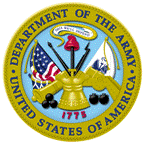United States Department of Defense
Document Type
Article
Date of this Version
2007
Abstract
Amodiaquine (AQ) and tebuquine are 4-aminoquinoline antimalarials with Mannich base side chain and are highly effective against chloroquine (CQ)-resistant strains of Plasmodium falciparum. Clinical use of AQ has been severely restricted due to hepatoxicity and agranulocytosis side effects associated with its long term use. Lysosomal accumulation and bioactivation to generate reactive quinoneimine metabolite are implicated to be the cause of the observed AQ toxicities. To avoid the quinoneimine formation and thus the toxicity, a series of isotebuquine analogues and their Nω-oxides with hydroxy group meta to the amino rather than in para position of the aniline moiety were prepared. The new Mannich bases are highly active against both CQ-sensitive (D6) and -resistant (W2 and TM91C235) clones of P. falciparum with IC50 in the range of 0.3-120 ng/mL. New compounds are1000-fold less toxic (IC50 = 0.7-6 μg/mL) to mouse macrophage cell line than to parasite cell lines. Mono-Mannich bases are more active than bis-Mannich bases. Mono-Mannich base 1a (IC50 = 0.3 ng/mL) is 20-fold more active than the corresponding trifluoromethyl analogue 1b. No appreciable difference in either toxicity or efficacy were observed between the new Mannich bases (m-hydroxyaniline derivatives) 1a or 2a and the corresponding p-hydroxyaniline derivatives.



Comments
Published in Med. Chem. 2007, 50, 889-896.